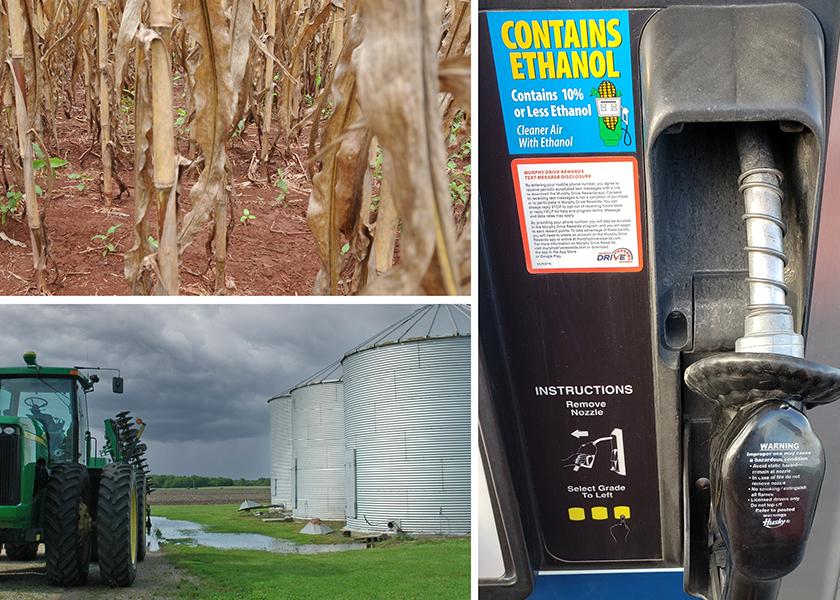Renewable Fuel's Big Week: EPA's RFS Proposal And Year-Round E15 Legislation

EPA, by court order, released renewable fuel blending proposals on Thursday for 2023, 2024 and 2025, as well as information about eRINS for electric vehicles.
The proposed volume requirements come as the agency faced scrutiny on Wednesday and early Thursday for its failure to meet their court-ordered proposal deadline of Nov. 30 in order to finalize by Jun. 14, 2023.
Proposed Volume Targets (billion RINs)
| 2023 | 2024 | 2025 | |
| Cellulosic biofuel | 0.72 | 1.42 | 2.13 |
| Biomass-based diesel* | 2.82 | 2.89 | 2.95 |
| Advanced biofuel | 5.82 | 6.62 | 7.43 |
| Renewable fuel | 20.82 | 21.87 | 22.68 |
| Supplemental standard | 0.25 | n/a | n/a |
*biomass-based diesel in gallons
“With this proposal, EPA seeks to provide consumers with more options while diversifying our nation’s energy mix,” said Michael Regan, EPA Administrator. “EPA is also focused on strengthening the economics of our critical energy infrastructure, needed to maintain and boost our energy security.”
Regan says his team is “eager” to continue the conversation around the RFS and will do so through public comment.
In replying to EPA’s comment request, the public will offer:
1. How the EPA can better balance the proposed volumes to work for renewable fuel consumers, growers and producers, refiners and workers that operate refining facilities.
2. Ways in which the EPA can “best” support sustainable aviation fuels (SAF) and clean hydrogen.
3. Methods for the EPA to work with domestic oil refining assets and merchant refineries.
4. How to account for incentives offered in the Inflation Reduction Act.
5. Thoughts on qualifying renewable electricity in electric vehicles into the RFS program.
New Regulations in the Works
The electric vehicle proposal in question five is tied to EPA’s latest regulation concept that would “increase U.S. energy security,” according to EPA.
In allowing renewable energy made from renewable biomass into the RFS, EPA says U.S. oil imports would be reduced by 160,000 to 180,000 barrels of oil per year from 2023 to 2025—the length of the proposed rule. The agency says this translates to $200-$223 million in savings each year.
Need for Public Comment
Seth Meyer, USDA chief economist, says these numbers show why the public comment period is “crucial” to the RFS, especially for the ag industry.
“I think for the U.S. biofuels sector, when considering what motor gasoline consumption might be over the next decade, we’re not talking about a growth market by most accounts. We’re talking about a flat to maybe declining market,” says Meyer. “In asking these questions, EPA wants to know how producers can find and contribute to other markets and fuel sectors, like SAF.”
According to Meyer, there tends to be a “big” response to these types of public comment periods. He says agencies often bring in “additional resources” to examine each comment in detail, and get the information tallied in the system.
In Other News
EPA’s RFS news and request for public comment comes as a group of Senators on Wednesday announced bipartisan legislation, the Consumer and Fuel Retailer Choice Act of 2022, that would make E15 blends available year-round.
"We’ve been able to bring critical oil/gas, biofuel, ag, and transportation stakeholders to the table around a common-sense solution," said Sen. Deb Fischer (R-NE). "With this strong coalition of support, it’s time Congress act to make year-round E15 a reality."
The U.S. is no stranger to year-round E15, as the Biden administration allowed American’s the option this summer to ease soaring pump prices.
Sen. Chuck Grassley (R-IA) joined AgriTalk Host Chip Flory on Wednesday to break down what sets this bill apart from past ethanol proposals.
“The shocking thing about this bill is that the oil industry supports it because it gives them an opportunity to sell more of their product,” Grassley says.
Grassley believes oil companies also hopped on board with this legislation as:
1. “Several Midwestern governors” having made it clear that E15 will be year-round in their states.
2. Year-round blending will extend the lifetime of liquid fuel availability.
Certainty was Grassley’s biggest concern for the biofuels industry this week. He says he worked to provide that by supporting this E15 legislation, as well as pressuring Regan to "fulfill his promise" for biofuels in the RFS announcement.
More on RFS:
EPA Sends RFS Plans to Next Phase as Nov. Deadline Approaches
EPA's Small Refinery Exemption Data Under Fire by U.S. Accountability Office







